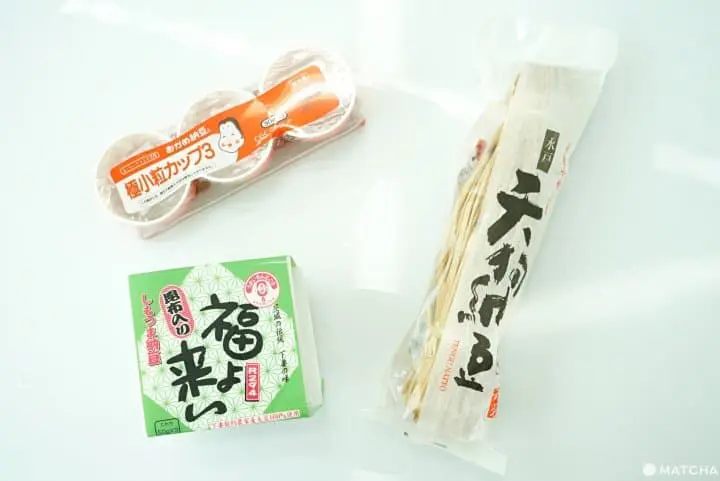Complete Natto Guide! Vegan And Beginner-Friendly Natto Tips From An Expert

Natto is considered one of the healthiest foods in Japan, but many don't know how to make these sticky fermented soybeans delicious. Read to learn about easy-to-eat natto, vegan and vegetarian recipes, and how to enjoy this nutritious traditional food, with tips from a natto guru and influencer.
Natto, the Healthy Fermented Soybean of Japan

Have you ever heard of natto? Natto, or fermented soybeans, is a traditional food that has been around for several centuries in Japan. Considered very nutritious, natto is known around the world for its potential health benefits.* High in protein and vitamins, it is a valuable nutritional source for many, including those on vegan, plant-based diets in Japan. However, with its strong smell and sticky texture, natto can be off-putting.
Mayuko Suzuki, a social media influencer and expert on natto recipes and natto-based meals, on the other hand, is very passionate about these fermented soybeans. I sat down with her to learn about the best ways to eat natto, vegan and vegetarian-friendly recipes, and everything else about the complex world of these healthy, fermented beans.
*1: Natto contains enzymes that may help with improving blood circulation and cardiovascular diseases. See this publication on the NCBI, U.S. National Library of Medicine for more information.
Natto in Japan: Where to Find It and How to Eat It

Natto is sold at nationwide supermarkets and convenience stores in Japan, often in a square-shaped plastic pack (lower-left) with three servings. You can also purchase it in small cups (upper-left). It is also sometimes available in straw (right) or tree-leaf packages, especially if it is high-quality natto.
Simply fermented soybeans, natto in itself is often vegan and vegetarian-friendly (*2, 3) and is an excellent source of protein and nutrients for those on a plant-based diet. Natto is part of the diet of many people in Japan and is often served as a breakfast item in ryokan and hotels.
*2: The majority of tare, or sauce, that comes with natto contains bonito fish extract. The natto on the lower-left in the above picture is the only one with vegan-friendly tare.
*3: Vegan in this article is defined as food made without animals, including fish and seafood, or ingredients derived from animals, including fish and seafood, dairy products and eggs, as well as honey. The fermentation process of commercially-available natto in Japan can sometimes include the use of gelatine. Concerned consumers are encouraged to contact companies directly.

Natto from Mito, Ibaraki Prefecture, packaged in straw.
Natto costs usually between 80 yen to 300 yen, depending on the brand and type. From variations in soybean size and manufacturer, there's a lot of different natto to enjoy in Japan.
Tips from an Expert on How to Eat Natto

Mayuko Suzuki, known as "Natto Musume" professionally and on social media, is a natto enthusiast and expert who has been eating fermented soybeans since childhood. She currently works freelance with companies, promoting natto and developing new natto-based products. Mayuko also contributes regularly to Japanese media websites and creates content for social media platforms, like Instagram and Youtube, to help more people know how delicious and fun natto can be.
Below are some of the highlights of our conversations on this fermented soybean.
Do you have any tips on eating natto for the first time?

Mayuko: Fewer people in Kansai eat natto than in other parts of Japan. Therefore, Kansai natto tends to be less sticky and have a gentler smell, making it suitable for those coming from foreign countries or trying it for the first time. ※710 in Osaka is a great place for eating natto at a restaurant with its easy-to-eat dishes.
A lot of people in Japan exclusively eat natto with white rice, but there are many other ways to enjoy it. Natto is a delicious curry topping, and chocolate is a way of trying natto if you have a sweet tooth.
Mayuko also mentioned that the small mustard package that accompanies the natto and tare (sauce) is meant to curb the strong smell of the beans. Add some in to make the natto have a milder flavor.
How do you properly eat natto?

Mayuko: After opening the natto package, remove any plastic or additional packets. Then, take a pair of chopsticks and start mixing! There is no right or wrong way for how much to mix the natto, but I do it for around 50 times. After that, I add in the tare and mix again–– around 150 times. This makes the natto very sticky and fluffy, which is what I think tastes the best.
After that, it's ready to enjoy!
How often do you eat natto? How do you usually enjoy your natto?

Mayuko: I eat natto about two to three times a day. I usually eat natto by itself, without rice. I'll sprinkle some salt first, without adding in the tare sauce that comes with it, to properly taste the flavor of the beans. If I'm going to eat natto in dishes, I really like everything, but I am especially fond of natto fried rice.
Natto in Chocolate and Curry? Tasty Vegan-Friendly Recipes

Next, Mayuko demonstrated how to use natto in everyday foods, including natto chocolate and natto in curry, which can be made both vegan and vegetarian-friendly.

Natto on top of melted chocolate, unmixed.
Mayuko: Melt the chocolate first (use a plant-based version of chocolate if you are vegan) and add in natto. Mix the natto and melted chocolate vigorously: the consistency will become similar to that of mochi (pounded rice).
The smell of the natto disappears into the chocolate, leaving just a springy texture, which I really like. You can add in soy sauce to give it a slightly salty, deeper flavor. Some people like to harden the chocolate and natto in the refrigerator to make a chocolate bar you can enjoy later.

Next, we tried a vegan tofu and vegetable curry topped with natto (the natto is in the middle, pictured above).
Mix the natto first and then put it on top of the curry and rice. If the curry is hot when adding the natto, the natto will become less sticky and lose some of its strong aroma. For some extra richness, put in a splash of soy sauce.

The result is a very tasty and easy way to eat natto: pronounced flavor of the curry balances well with the natto, and the stickiness of the natto also subsides a little.
For those without a kitchen or ways to cook, natto is found at restaurants, too. For natto fried rice, try Fumin near Omotesando, and for dan dan noodles, order the natto toping when dining at Tantantan in Shibuya.
Taste the World of Natto

Despite its pungent smell and stringy, sticky texture, everyone should try natto at least once to experience the unique, nutty flavor and stickiness. Natto can be an acquired taste, but as shown by Mayuko, there are many different ways to enjoy this complex, nutrition-filled food that will please different taste preferences and work with various dietary lifestyles.
Find more about Natto Musume (Mayuko Suzuki) via Instagram
Read Natto Musume's contributions online to "Hanako" on Neba Log (Japanese)
In cooperation with Mayuko Suzuki.
An awkward Southern California native living in Osaka. Originally came to Japan on the JET Program in Hyogo Prefecture (Kansai) after studying economics in college, and decided to try to stay.
IUC 10-month program graduate. Vegan and interested in all things Japan-related. Left-handed. Very fond of Kansai.










































![[2026] Top 5 Strawberry Picking Spots in Tokushima, Naruto| Farms and Access Guide for January to May](https://resources.matcha-jp.com/resize/720x2000/2025/03/06-227165.webp)



